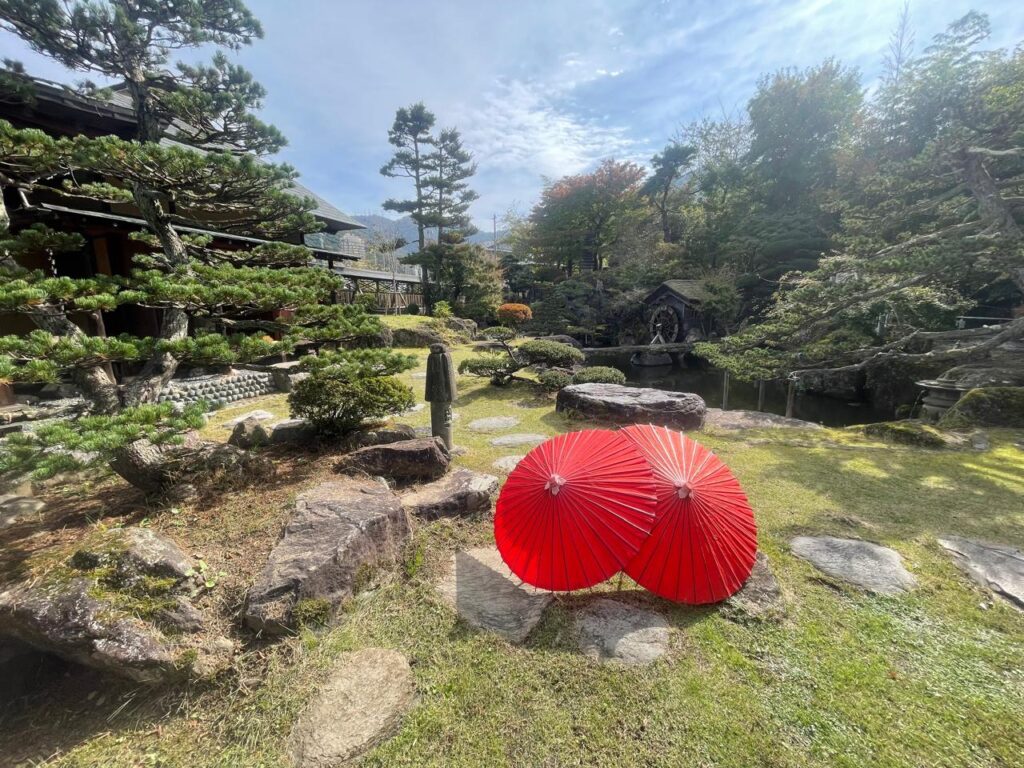
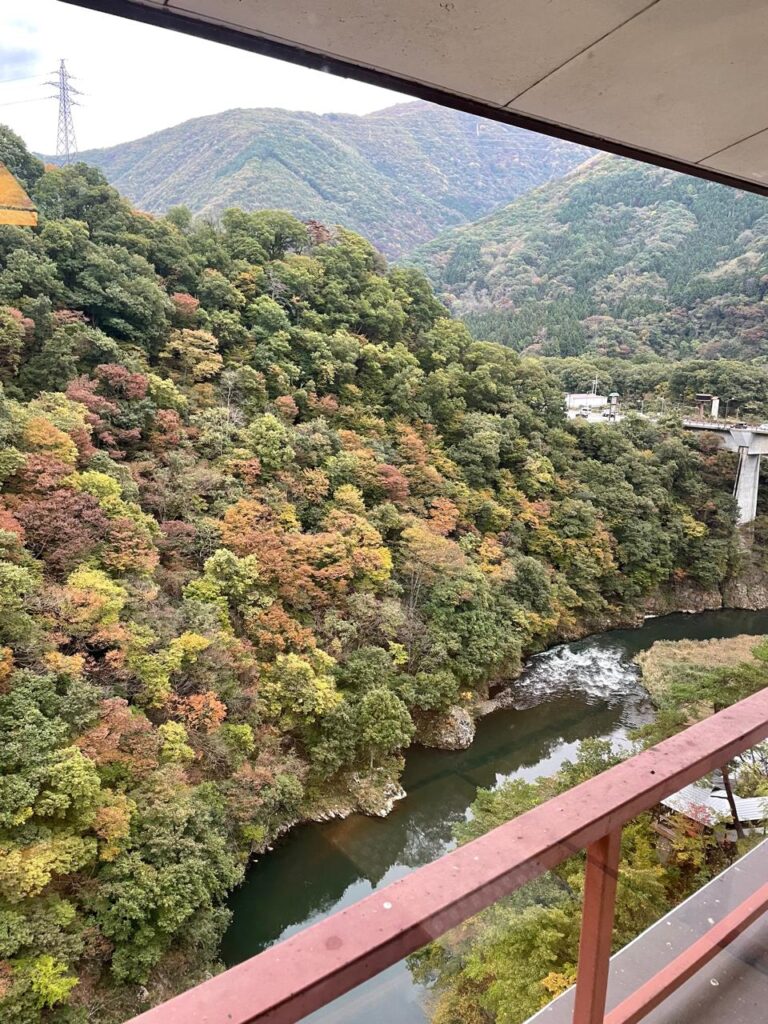


AIZU-WAKAMATSU, Fukushima: Tucked away in the scenic heart of Fukushima Prefecture, Aizu is a place where timeless tradition meets breathtaking landscapes. Aizu offers more than just a destination—it’s a journey into the soul of Japan, where ancient samurai warriors once roamed, and centuries-old customs still thrive.
With its lush mountains, tranquil hot springs, and iconic historical landmarks, Aizu is an immersive experience that lets visitors step into Japan’s storied past while enjoying the natural beauty that surrounds it.
Whether you are visiting Aizu-Wakamatsu as part of the samurai experience or are simply interested in exploring the historic city, here are the places worth visiting:
Higashiyama Onsen

Start your trip with a relaxing visit to Higashiyama Onsen, a hot spring resort nestled in a valley just east of downtown Aizu-Wakamatsu.
Established over 1,300 years ago by the Buddhist priest Gyōki during the Tenpyo era, this tranquil retreat has been popular with samurai since the Edo period. The lush greenery around the onsen will leave you mesmerized as you unwind, imagining the samurai warriors who once sought refuge here.
Aizu Bukeyashiki (Samurai Residence)
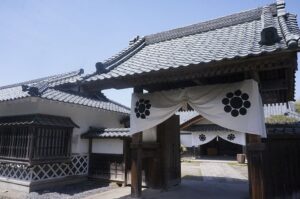
After relaxing your body, feed your mind with a stroll through Aizu Bukeyashiki, an open-air museum that transports you to the world of the samurai.
Walk through the 38-room house of Saigo Tanomo, the chief advisor to the Aizu clan, and get an insight into the lifestyle of a high-ranking samurai family. Workshops such as archery, traditional painting, and glass etching offer a hands-on experience of samurai traditions.
Tsurugajo Castle
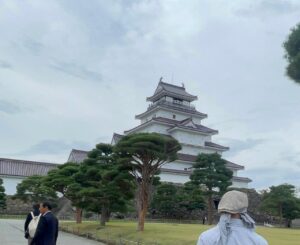
No visit to Aizu is complete without touring Tsurugajo Castle, a symbol of the samurai’s courage and faithfulness.
The castle, particularly beautiful in autumn when framed by colored leaves as well as in spring with the Sakura flowers, has been largely reconstructed, but its original stone walls remain.
The museum here showcases samurai swords and armor, providing a visual understanding of their fierce history. If you need a break from walking, stop by the Rinkaku Tea Rooms for a cup of matcha green tea and experience the tradition of Japanese tea ceremonies.
This tea house was built for the son of the Japanese tea master, Sen no Rikyu. He built Rinkaku to popularize tea ceremony in Aizu.
The tea house was moved to the grounds of a tea school when Tsurugajo castle was demolished in 1874, but it was returned to the castle in 1990.
Ookawaso
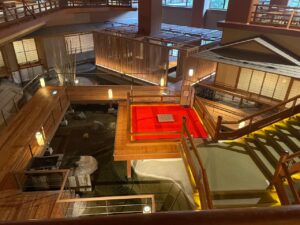
For an unforgettable night in Aizu, stay at the traditional inn, Ookawaso, located in the Ashinomaki Onsen resort along the Okawa River.
Anime fans will be delighted to learn that it bears a striking resemblance to the Infinity Castle from Demon Slayer.
Enjoy a live shamisen performance, a delicious set menu made from local ingredients and relax in large baths and lie-down saunas to soothe your body after a day of sightseeing.
If reservations are made in advance, it is possible to watch a special show by Master Tetsuro Shimaguchi and his other artists to experience the real spirit of samurai.
Oyakuen Garden
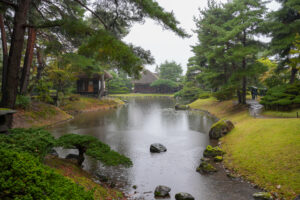
Start the next day with a peaceful stroll through Oyakuen Garden, a place said to heal the soul. This traditional garden, originally a villa for the leader of the Aizu Domain, is over 600 years old and was once used to grow medicinal herbs.
Now a national asset, the garden offers a serene atmosphere, with ancient trees, clear lakes, and buildings devoted to Japanese tea, where you can enjoy a cup of herbal tea.
Aizu Hanko Nisshinkan
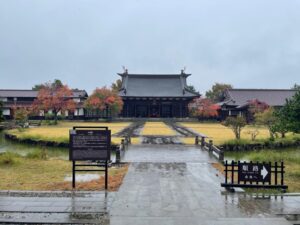
For a deeper dive into the samurai way of life, visit Aizu Hanko Nisshinkan, the highest-level learning institution of its time. Established in 1803, this school trained children from high-class samurai families in academic and physical disciplines.
Today, visitors can participate in samurai activities like tea ceremonies, archery, and meditation, or try their hand at painting an akabeko (red cow), a traditional good-luck charm of Aizu.
Hanitsu Shrine
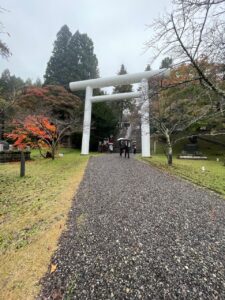
End your Aizu journey with a visit to the Hanitsu Shrine, dedicated to Masayuki Hoshina, the founder of the Aizu Domain. He was the grandson of Tokugawa Ieyasu, the first shogun of the Edo shogunate, and he has passed on the spirit of the samurai to the present day.
With a history spanning over 400 years, the shrine is most popular in autumn when the grounds are covered with vibrant red leaves.
Capture the beauty of this sacred site, a perfect ending to your Aizu adventure.
So, whether you’re seeking an adventure steeped in history, a retreat into nature, or a chance to embody the samurai spirit, Aizu promises a journey like no other—one where every step is a connection to Japan’s rich past and vibrant present.